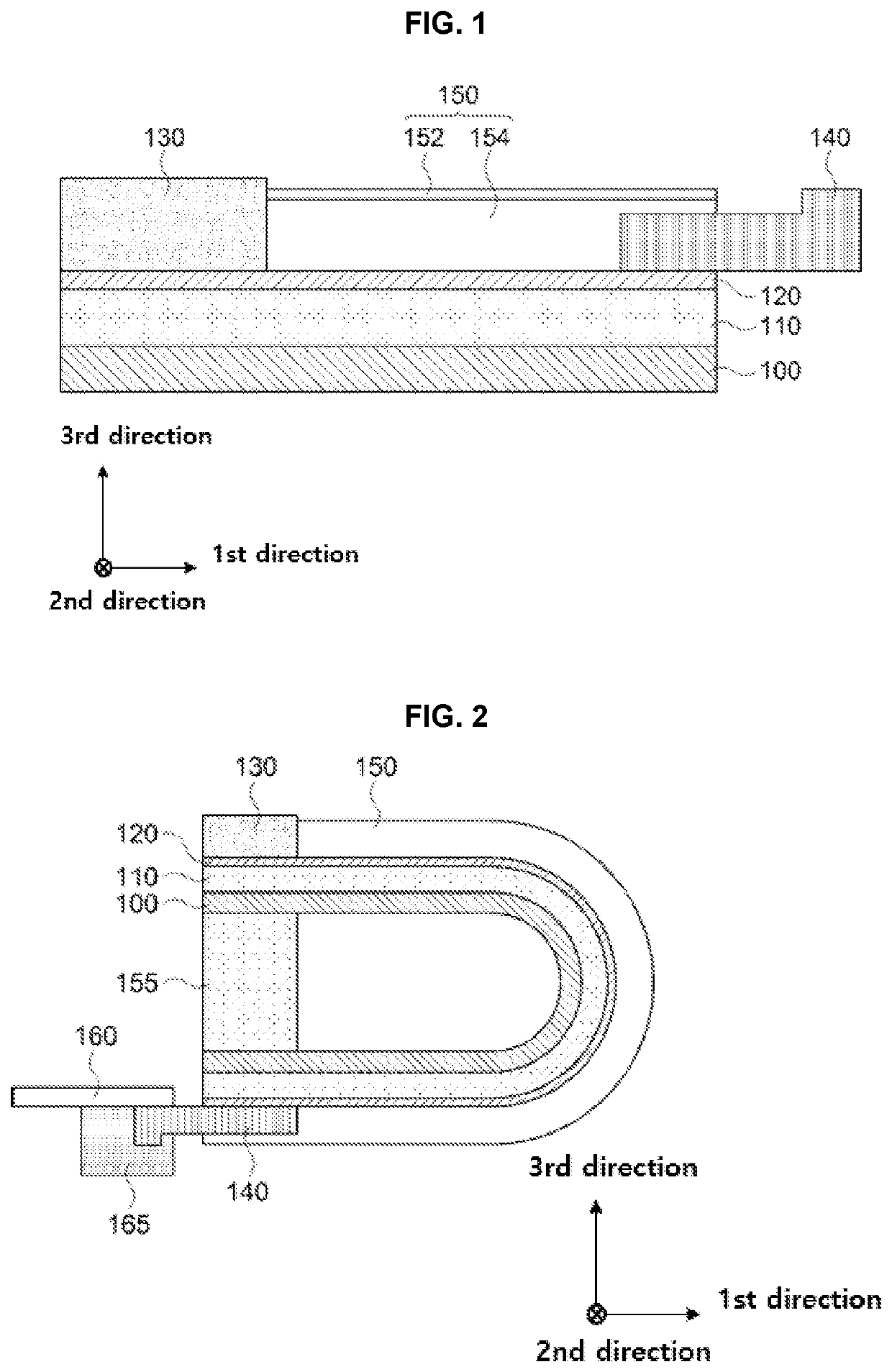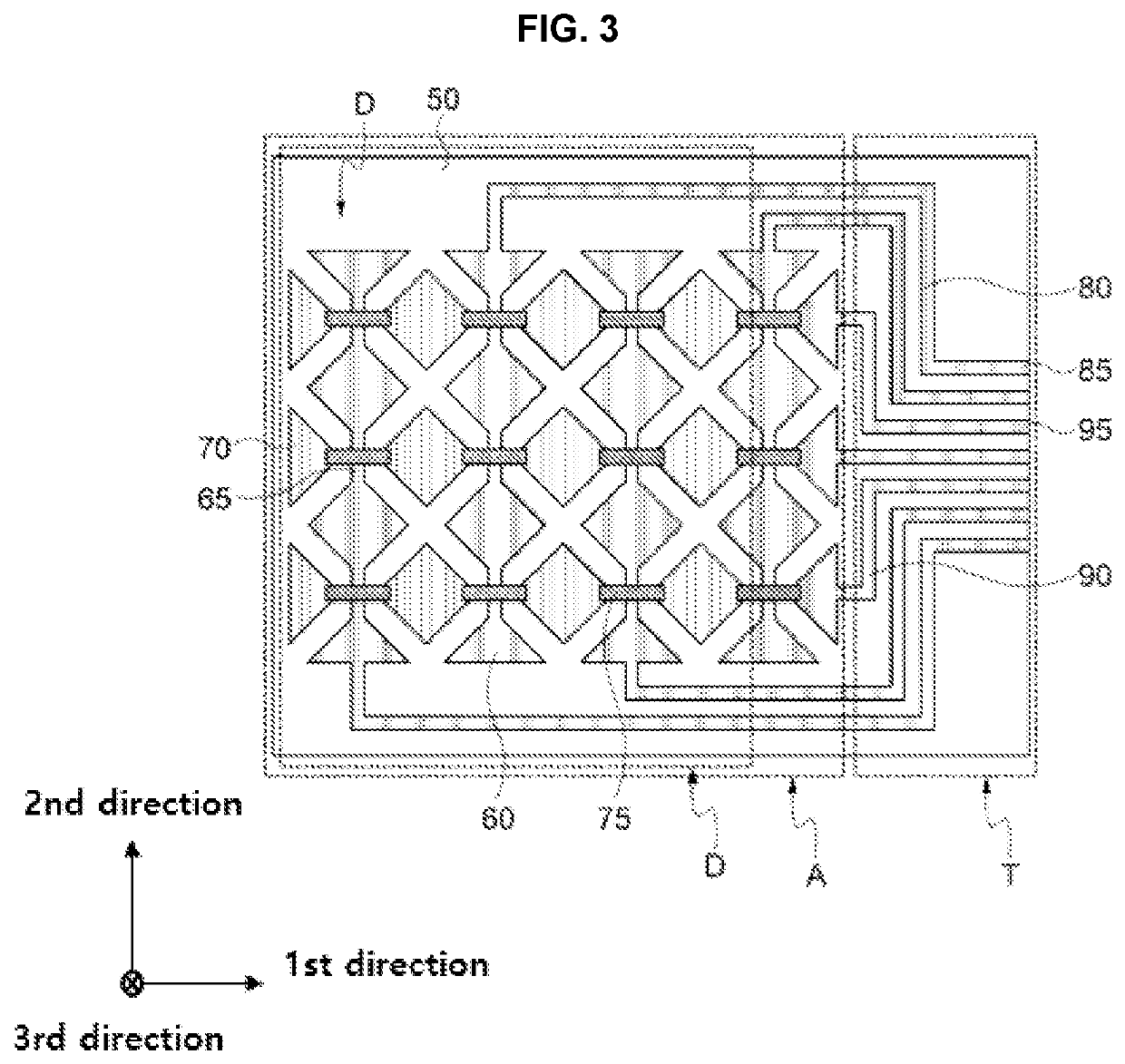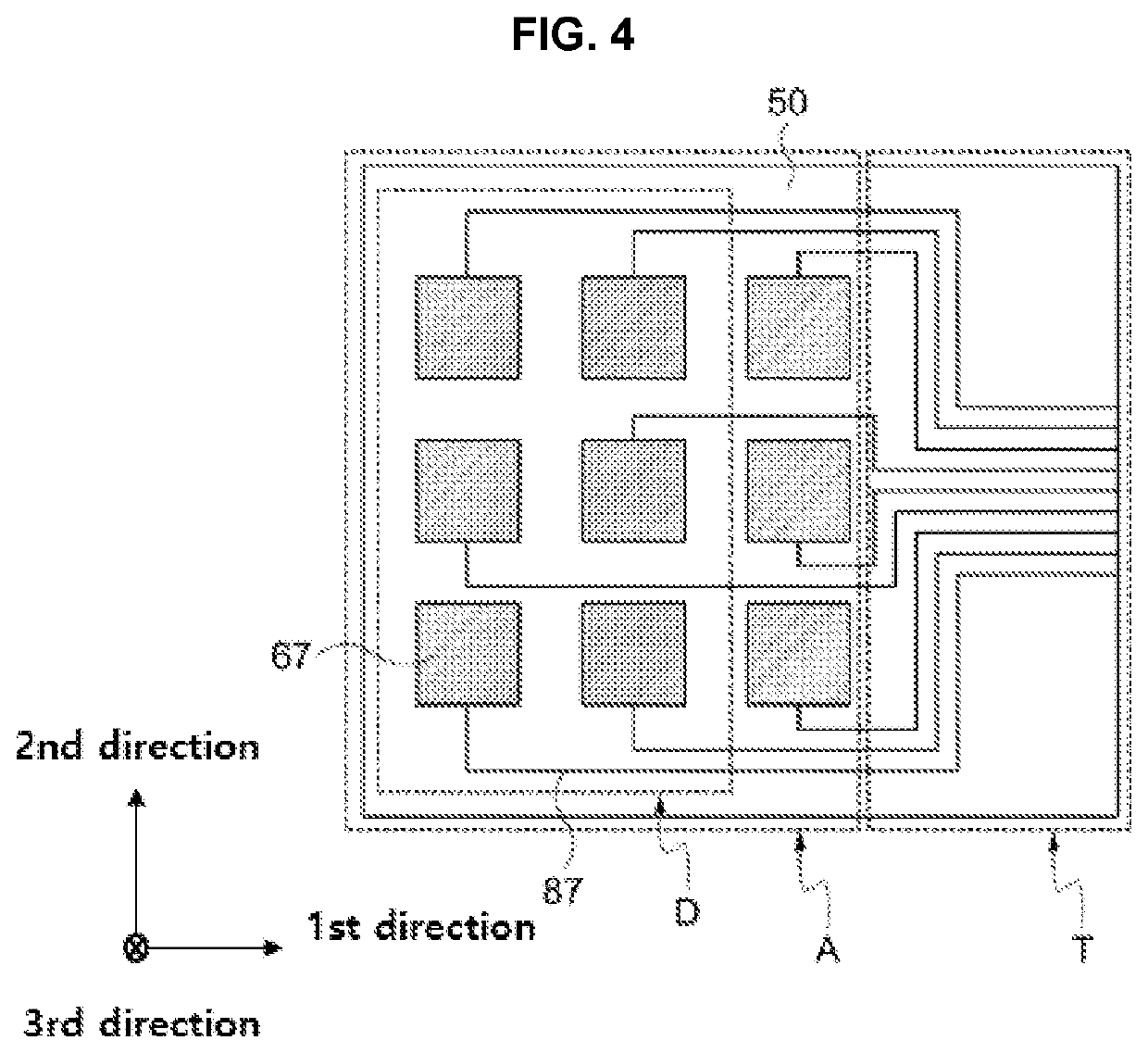Flexible display module and image display device including the same
a flexible display module and display module technology, applied in the direction of non-linear optics, organic semiconductor devices, instruments, etc., can solve the problems of delamination and mechanical damage, damage to electrodes or connection wiring, etc., and achieve high-reliability circuit connection, prevent peeling of flexible printed circuit boards, and avoid damage to the effect of electrodes
- Summary
- Abstract
- Description
- Claims
- Application Information
AI Technical Summary
Benefits of technology
Problems solved by technology
Method used
Image
Examples
example 1
[0129]A touch sensor sample (manufactured by Dongwoo Fine-Chem) including electrode patterns and traces that had a thickness of 0.14 μm and was formed of ITO, and a 20 μm PET protective film was prepared. The touch sensor sample was attached to a substrate for a display panel (thickness: 40 μm) containing polyimide using an adhesive sheet as a combining layer (thickness: 50 μm) prepared as described below.
[0130]Specifically, a monomer mixture including 35 parts by weight of ethyl hexyl acrylate, 25 parts by weight of ethyl hexyl methacrylate and 40 parts by weight of isobornyl acrylate was input in a 1 L reactor equipped with a cooling device capable of refluxing a nitrogen gas and controlling a temperature. After injecting, the nitrogen gas was purged for 1 hour to remove oxygen, and then maintained at 80° C. After uniformly mixing the monomer mixture, 0.5 parts by weight of 1-hydroxy-cyclohexyl-phenyl-ketone was added as a photo-initiator based on 100 parts by weight of a total we...
experimental example
[0145]A bending test at room temperature for 720 hr. was performed using a 0.5R bending evaluation jig for each flexible display module of the above-described Examples and Comparative Examples.
[0146]After the bending test, a delamination at the bonding area where the flexible circuit board (FPCB) was combined and cracks of the traces included in the touch sensor layer were observed. In Table 3 below, the result when the delamination and the cracks were not observed is represented as “O”, the result when the delamination / cracks were detected is represented as “NG”.
[0147]Further, a touch sensor driving was tested after the bending test using a touch sensor function tester. Specifically, in Table 3 below, the result when the sensing function was maintained is represented as “O”, and the result when the sensing function was not implemented is represented as “NG”.
[0148]
TABLE 3FPCBTouch SensingDelaminationCracks in TracesFunctionExample 1OKOKOKExample 2OKOKOKExample 3OKOKOKExample 4OKOKOK...
PUM
 Login to View More
Login to View More Abstract
Description
Claims
Application Information
 Login to View More
Login to View More - R&D
- Intellectual Property
- Life Sciences
- Materials
- Tech Scout
- Unparalleled Data Quality
- Higher Quality Content
- 60% Fewer Hallucinations
Browse by: Latest US Patents, China's latest patents, Technical Efficacy Thesaurus, Application Domain, Technology Topic, Popular Technical Reports.
© 2025 PatSnap. All rights reserved.Legal|Privacy policy|Modern Slavery Act Transparency Statement|Sitemap|About US| Contact US: help@patsnap.com



